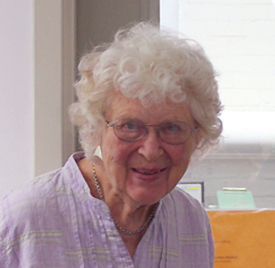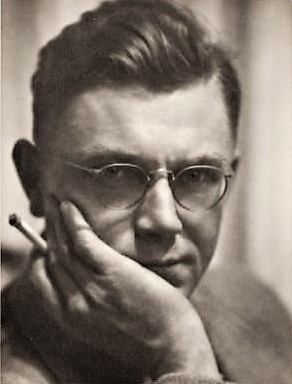Jay Isaac | |
|---|---|
| Born | 1975 (age 48–49) Saint John, New Brunswick, Canada |
| Known for | Painter, graphic artist, collagist, sculptor |
Jay Isaac (born 1975) is a Canadian artist based in Rowley, New Brunswick, Canada. He is known primarily for his painting, but he has produced numerous projects within the social sphere. [1] He was founder, editor, publisher, and designer of Hunter and Cook magazine (2009-2011). [2] He founded and ran the @nationalgalleryofcanada Instagram account (2014-2016). He founded and co-runs Peter Estey Fine Art, an auction house dedicated to presenting idiosyncratic historical Canadian art (2018–present). Isaac is represented by Paul Petro Contemporary Art in Toronto.
Isaac was born in Saint John, New Brunswick and is of Lebanese descent. [3] He attended Cardiff School of Art and Design in Wales in 1996 and graduated from the Emily Carr Institute of Art and Design in 1997.
In 2020 Isaac was awarded a Chalmers Fellowship through the Ontario Arts Council to research historic mural production in former Soviet Ukraine and Georgia and New Deal era murals from the United States. This research developed into a series of large scale paintings titled Mural Studies, which were exhibited at Paul Petro Contemporary Art, Toronto in 2021.
In 2018 the Toronto publisher Swimmers Group published "Like a Baby I Was Born Again", a book of Isaac’s drawings. The drawings were surreal, social and political commentary cartoons. Two of the drawings were exhibited at The Brucke Museum in Berlin.
His series "Second Eye", which was exhibited at Monte Clark Gallery, Toronto in 2012, was fabricated using a combination of unsold furniture items from a small antique shop he ran in Toronto and unresolved works in his studio. The amalgamation of the two “failed” components produced idiosyncratic sculptural works that writer Ben Portis described as “the nerviest gallery encounter of the year”. [4]
Between 2005-2010 Isaac collaborated with musician Lorenz Peter to create Bay of Creatures, an experimental music project. A compilation was released by Toronto label Paper+Sound in 2017. [5]

The Art Gallery of Ontario is an art museum in Toronto, Ontario, Canada, located in the Grange Park neighbourhood of downtown Toronto, on Dundas Street West. The building complex takes up 45,000 square metres (480,000 sq ft) of physical space, making it one of the largest art museums in North America and the second-largest art museum in Toronto, after the Royal Ontario Museum. In addition to exhibition spaces, the museum also houses an artist-in-residence office and studio, dining facilities, event spaces, gift shop, library and archives, theatre and lecture hall, research centre, and a workshop.

The Beaverbrook Art Gallery commonly referred to simply as The Beaverbrook, is a public art gallery in Fredericton, New Brunswick, Canada. It is named after William Maxwell "Max" Aitken, Lord Beaverbrook, who funded the building of the gallery and assembled the original collection. It opened in 1959 with over 300 works, including paintings by J. M. W. Turner and Salvador Dalí. The Beaverbrook Art Gallery is New Brunswick's officially designated provincial art gallery.

Walter Tandy Murch was a painter whose still life paintings of machine parts, brick fragments, clocks, broken dolls, hovering light bulbs and glowing lemons are an unusual combination of realism and abstraction. His style of painting objects as though they are being seen through frosted glass has been compared to 18th-century painters such as Chardin, while his oddly marred and pitted surfaces tend to evoke the 20th-century's abstract expressionists. He is the father of sound designer and film editor Walter Scott Murch and Louise Tandy Schablein.
Viktor Mitic is a Serbian-born Canadian painter and sculptor living in Toronto, Ontario. He is best known for incorporating firearms in his art, a skill he acquired during national service in his native Yugoslavia. Because art and violence coexist in an inexplicable way, Mitic says his art highlights the absurdity and senselessness of gun violence, but at the same time he transforms these acts into art. One of his most notable works, the Blasted Beaverbrook, was commissioned for exhibition in 2009 by New Brunswick's provincial gallery, the Beaverbrook Art Gallery.
Stephen Andrews is a Canadian artist based in Toronto. He is known for using various media to explore matters such as memory and loss, and technology, and its representations.

The Fountain of Indolence is an oil painting by the English artist J. M. W. Turner. First exhibited in 1834, it is now in the collection of the Beaverbrook Art Gallery in Fredericton, New Brunswick, Canada.

Lois Etherington Betteridge was a Canadian silversmith, goldsmith, designer and educator, and a major figure in the Canadian studio craft movement. Betteridge entered Canadian silversmithing in the 1950s, at a time when the field was dominated by male artists and designers, many of them emigrés from the United States, the United Kingdom, and Europe. In fact, Betteridge was the first Canadian silversmith to attain international stature in the post-war studio craft movement.
Douglas Walker is a Canadian painter living and working in Toronto, Ontario.
Leesa Streifler is a Canadian multi-disciplinary artist and art professor who lives in Winnipeg, Manitoba. Her works have been exhibited extensively in solo and group exhibitions, nationally and internationally, and appear in the permanent collection of the National Gallery of Canada and the Canadian Museum of Contemporary Photography.

Philip Surrey LL. D. was a Canadian artist known for his figurative scenes of Montreal. A founding member of the Contemporary Arts Society, and Montreal Men's Press Club, Surrey was part of Montreal's cultural elite during the late 1930s and 1940s. In recognition of his artistic accomplishment he was elected to the Royal Canadian Academy of Arts, awarded a Canadian Centennial Medal in 1967 and was appointed to the Order of Canada in 1982.
Alex Cameron is a visual artist living and working in Toronto, Ontario. He is a member of what has been described as the third generation of artists inspired in their painting style by Jack Bush. During the first part of his career, Cameron fashioned elegantly drawn shapes into abstractions; in the latter part of his career, influenced by Tom Thomson and the Group of Seven, he sought to delineate landscape in his semi-abstract work.
Catherine Marie Daley was a Canadian visual artist and educator located in Toronto, Ontario.
Frederick Joseph Ross LL. D. was a New Brunswick based Canadian artist best known for his figurative drawings, paintings and murals.
Elaine Goble is a Canadian visual artist who lives in Ottawa, Ontario.
Gordon Rayner was a Canadian abstract expressionist painter. His way of creating art was idiosyncratic and characterized by constant innovation and often by transformation of his medium. Later, he integrated realism into his practice.
Paul Sloggett is a Canadian abstract painter known for his use of geometric shapes and patterns in creating paintings and for his many teaching and administrative appointments at OCAD University, Toronto, where he served as a full professor since 2001 and as Assistant Dean of the Faculty of Art. He now teaches at Seneca Polytechnic.
Daniel Solomon is an abstract painter who uses intense, vibrant colour in his work, combined with complex, pictorial space, inspired by artists such as Jack Bush and is a painter and professor in Drawing and Painting at OCAD University.
Anthony Gordon Shadrach is a Canadian artist and educator based in Toronto. Shadrach is known for exploring the semiotics of dress and its impact on culture, in particular the intersection and codification of race and fashion through his painting and textile based work. Born and raised in Brampton to Dominican and Trinidadian parents, Shadrach's work frequently engages themes of Blackness in Canada, the African Diaspora, and masculinity.
Thomas DeVany Forrestall, was a Canadian realist painter. Forrestall was born in Middleton, Nova Scotia and studied with Alex Colville at Mount Allison University. He became a fulltime professional artist in 1960. His works, chiefly painted in watercolour or egg tempera, are held by major galleries throughout Canada.
John Richard Fox was a painter, sculptor, collagist, watercolourist and draftsman, as well as an educator who lived in Montreal most of his life. His work beginning in the late 1950s moved easily from representation to abstraction in 1972 and in 1986, back again to representation. He regarded the two different aspects to his work as having the same concerns. He was often praised as a colorist and for his rich surfaces and subtlety of effects, even in his abstract work. As has been recognized increasingly since the 1990s, Fox’s paintings and particularly his abstractions are a valuable part of Canadian modernism.